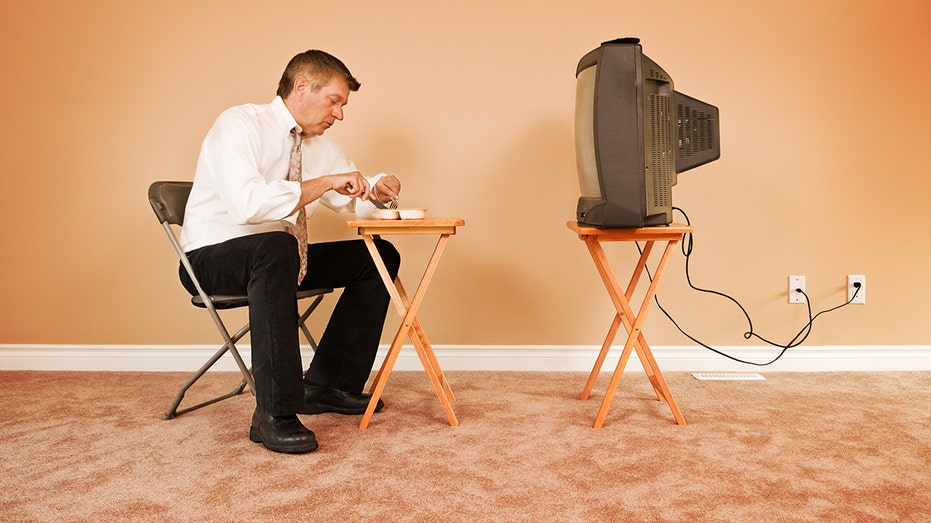A former symbol of postwar convenience is making a comeback in American homes as more people eat, work, and unwind in front of the television. Chalk it up to remote work, smaller living spaces, and streaming culture—these factors are reshaping how people spend their time at home and fueling a renewed interest in the once-kitschy TV tray.
“Eating on the couch has become a lot more normal,” said Isfira Jensen, CEO and principal designer of Jensen & Co. Interiors in New York City. “The living room is doing double duty, which creates a practical need for furniture that can slide in and out of view as needed,” she told Fox News Digital.
The comeback of the TV tray ties closely to post-pandemic habits and a culture built around streaming and comfort, Vogue magazine recently reported. Modern home designs are increasingly influenced by where people actually spend their time — often in front of a screen.
Fewer Americans are gathering around the dining table these days as well. While most grew up eating at the dinner table, fewer than half do so now, according to recent studies. Meanwhile, the number of people dining on the couch has risen sharply as family mealtime continues to decline.
Americans are also dining away from home more than ever before, particularly in sit-down and fast-casual restaurants, and to a lesser extent in schools and hotels, according to the U.S. Department of Agriculture (USDA).
Designers find that people are looking for furniture pieces that are compact, flexible, and made for multitasking. The versatile trays, which range in price from about $10.99 at Target to $199 at West Elm, now serve as mini desks, dining tables, and drink stands.
“It’s more pragmatism than nostalgia,” Jensen said. “People’s needs at home have changed, and it’s fueling the demand for multifunctional furniture.”
“TV trays fit perfectly into the rhythm people have created in their living rooms where they’re constantly streaming, working, and eating, and they need furniture that flexes with their needs. Today’s TV trays aren’t your traditional folding tables.”
The comeback isn’t just about convenience; it’s also about bringing style back, moving beyond the wobbly aluminum sets of the 1950s. Contemporary tray tables made from brass, bamboo, and acrylic blend mid-century nostalgia with minimalist design.
Sales of some bamboo snack tables even tripled during the pandemic, according to The Wall Street Journal.
“Today’s TV trays aren’t your traditional folding tables,” Jensen reiterated. “The aesthetic is cleaner and more streamlined.”
She added that modern designs include slim C-shaped tables that tuck neatly under a sofa, adjustable-height perches, and lightweight fold-flat styles, crafted from refined materials like wood, stone, and coated metal.
“The goal of today’s pieces is to be used as an accent in your current décor rather than just a piece that should be put out of sight,” Jensen said.
Social media’s popularity has also played a role in redefining home aesthetics.
“Instagram and Pinterest trends on ‘cozy living’ have helped redefine what a beautiful home looks like,” Jensen explained. “Spaces now feel intimate, warm, and lived-in rather than overly styled or formal.”
“Everyday people, rather than just décor magazines, are sharing designs that make homes more livable—and that includes pieces like TV trays.”
https://www.foxnews.com/food-drink/retro-dinnertime-favorite-trending-again-taking-over-american-homes
